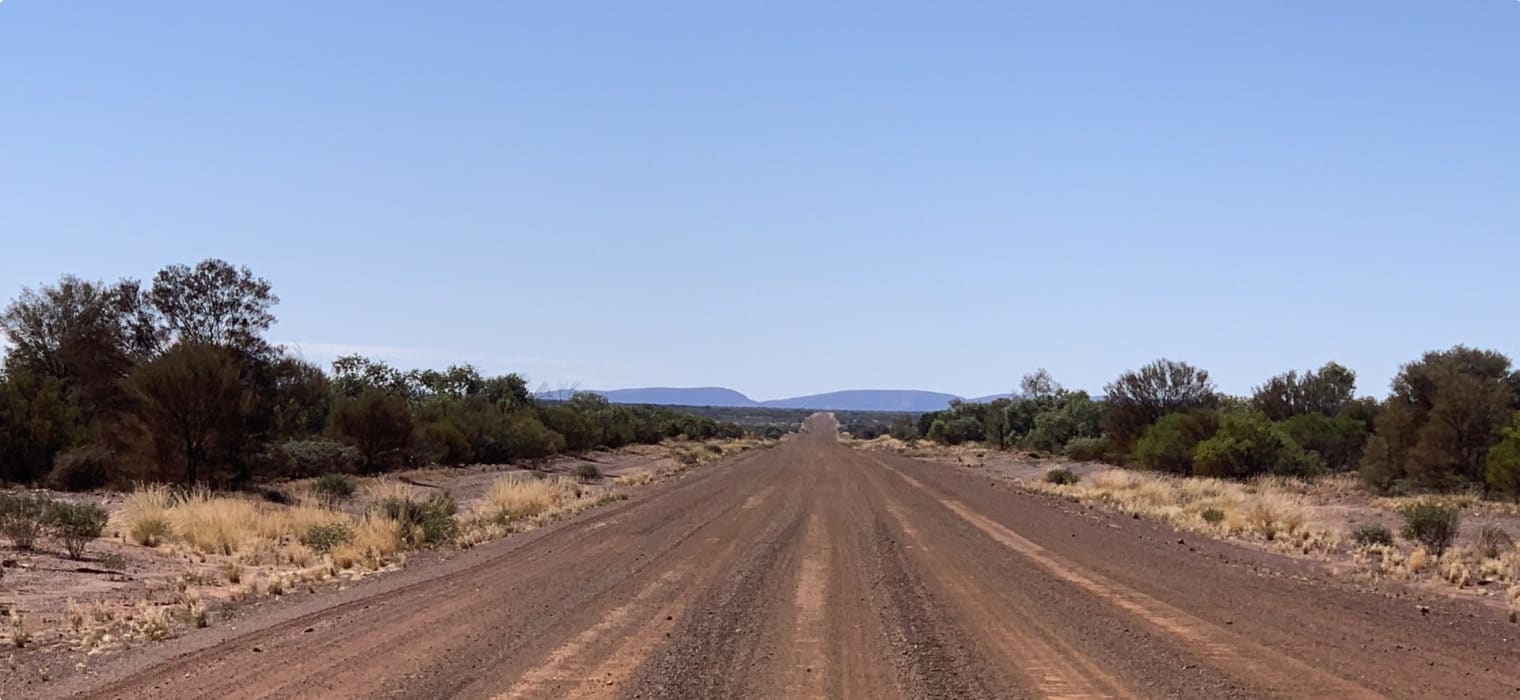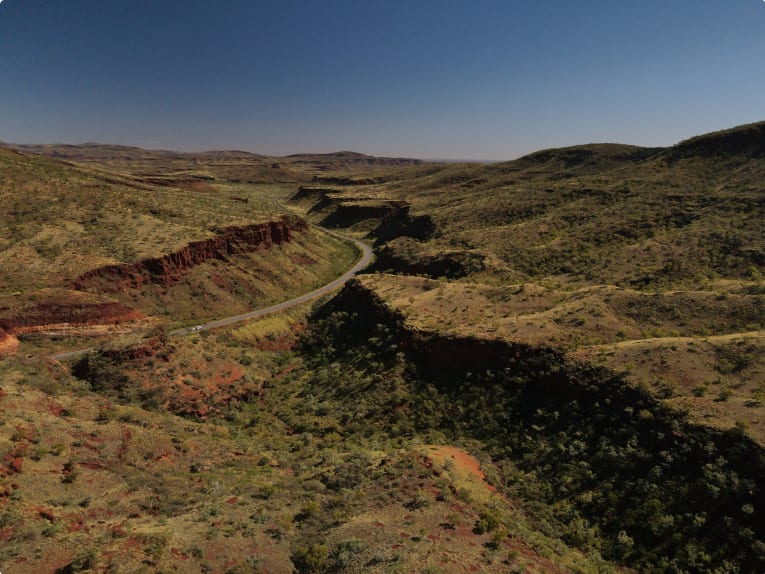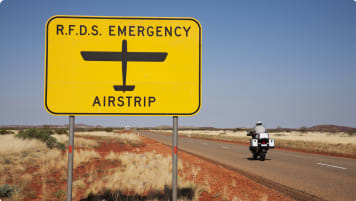Motorcycle safety in the Australian outback
Australia is a big country. Planning is crucial for a successful small group motorbike tour into the outback. Explore outback Australia, the deep aboriginal history and the landscapes as well the places explorers such as Sturt roamed. Article outlines approach to personal safety in the outback.
7 Jan 22 · 9 mins read

Motorcycle safety in the Australian outback
For many who ride, the thought of taking one or more Australian outback motorcycle adventures as a road trip to observe first hand the Australian outback spectacular that is the deep history of the first Australians, the landscape, light and the wildlife is an unrealized feature of the bucket list.
Before you commit to this trip or many trips into the Australian Outback, you need to plan when you will go and consider these points also;
- The outback is suitable during the cooler months, that is late March to Mid October for riding in.
- Never attempt a unsealed road when the road closed sign is up, if in doubt contact the relevant authorities and ask.
- Going off road, trails such as the the canning stock route, the route of the Finke desert race, the great central way typically require a different skill set for many hours at a time to just riding on a gravel road. Could you cope?
- Winter is still hot in the outback, though mornings can be dry and chilly, darkness comes quickly in the North.
- Recognize the signs of fatigue (and dehydration) as a rider whether in a group or solo, stop and rest.
There are many must do motorcycle trips in Australia ranging from one day too many weeks. Each state provides the opportunity for the reader-rider to consider and plan for one or a collection of unique motorbike road trips. In New South Wales we go west beyond beyond the UNESCO Blue Mountains to Broken hill, the western edge of the desert leading into outback Australia. Your ride could continue onto Mungo National park. Or continue or commence in South Australia heading into Northern Australia and the Northern Territory, via the Flinders range along the Oodnadatta track to Lake Eyre and across to the opal town of Coober pedy, the southern edge of central Australia and indigenous protected areas.
As a rider, you have invested in your bike, it is important and responsible to yourself and for those who care about you including your family that you take any chosen outback motorcycle adventures with your safety and those of your travelling companions as the priority. It will never be a good story if you do not return or do but are permanantly disabled through just a second of lapsed concentration. This article does not cover the consumption of alcohol or other substances. But the residual impact on your ability to make good choices from the potential excessive intake of alcohol the previous day or days could be very dangerous on yourself and members of your bike tour when travelling in the Bush and a split second decision has to be made, hesitation is often the major contributor in a accident. Some Adventure bike magazines and blogs pride themselves on the lucky escape, broken ribs, some bruising, but what is the cause and how could the rider and the group of riders been better prepared.

Life safety in the Australian Outback is your priority.
Whether riding solo or in a small group, the object remains constant, to return from your outback adventure with stories and experiences from Kakadu National park or Kata tjuta (Ayers rock) and Kings canyon to have observed, collected memories to share with families and friends. On this type of outback motorcycle adventure, preparation and awareness of time and distance to travel are the building blocks for a successful outback Australia motorcycle tour that you have dreamed of enjoying.
The following is our list of things to consider beyond your motorbike, helmet, and gloves. Some pointers if you like for you to manage your outback motorcycle adventure to the red centre or across the top end, leaving Port Douglas, crossing outback Queensland into the Northern Territory and into Western Australia, or completing this long distance motorcycle ride across Australia in reverse order. Being prepared is important, the anticipation factor. Many Motorcycle blogs or Adventure magazine articles seem to engage with some of the most unlucky riders out in the Aussie outback, flat tyres, falling off, and striking animals even lack of fuel.
Any outback motorcycle adventure of more than 24 hours into outback Australia needs planning and an understanding and management of the risks and how to manage. For regular explorers, each motorbike road trip into outback Australia should be building on the experience and knowledge gained from the previous motorbike road trip taken.

Suggestions to assist you with being safe on a Australian outback Motorcycle adventures
Tell someone where you are going.
This is commonsense, but what makes your road trip easier is a GARMIN device or equivalent. A device that you can send and recieve text messages from your phone, you can be tracked by those you will to let know where you are, has a range of standard messages, such as “starting my trip”. This messaging is not a feature of alternative products such as Spot and could never be recommended as first choice on any outback motorcycle adventures taken.
There is limited or no reception once you reach the outback and central Australia. A garmin satellite communication device de-risks your problem should something happen including the “SOS” button.
Alternatively let the local police station know where you are going that day. A, 1-2 minute stop and conversation could be a lifesaver.
If riding solo or a pair then the Garmin is a potential life saver. If in a small group guided tour then at least the leader on this motorcycle tour should have a device.
Pack a functional tool kit and first aid kit.
At least one rider should include a range of tools in the pannier of there adventure bike to cover as many common issues as possible when on your motorcycle tour. This should include as well as your regular tools but not be limited to;
- Puncture repair kit
- Power block, fully charged with jumper leads to restart any adventure bike on the trip.
- A folding shovel, handy for many things including a creek crossing.
- A petrol bladder of at least 8 litres capacity, ideally a roll up that attaches to the pannier.
- A pack of flares. These are a maritime signal device, my view remains, do whatever it takes to be found from the air!!!
Prepare the bike properly.
This means the right tyres for the underlying road conditions. If you are going to ride on gravel, sand and enjoy some corrugations and whoops, then put on the appropriate tyres for your adventure bike or road bike. For an adventure bike, this is likely to be at least 50:50 tyres. You should also consider a skid plate and crash bars. The skid plate offers protection against the large rock hitting the exhaust or sump. Also be sensible, if you are 2k km’s from the next service and prepping for a 4k km ride, service the bike before you leave, let the professionals lend a helping hand. If on a long ride more than 10k km, then think about the service interval and servicing the bike remembering to book ahead and consider if new tyres will also be required. Look after the bike. No-body needs a breakdown experience some 200kms with 90 minute of daylight left in the outback, it is damm dark out there.
Consider putting an extender plate on the side stand. After a long crossing of the Simpson desert or arriving in Byron bay, having to pick the bike up is not a good look for the adventure rider when you are tired, possibly dehydrated and looking to fuel up or finish the day. The extender plate provides that bit of extra surface area to hold the bike up when dismounting.
Also when stopping in the outback, consider pulling over to the right hand side of the highway, the bike, leans to the left making the dismount and remounting of your fully loaded adventure bike easier for you, again avoiding that unesscary bike drop.
Avoiding the threat of wildlife on the road.
Encountering wildlife and wandering stock is a worry, a consideration. The tell tale sign tends to be the frequency that the smell of dead animals reach you as you ride. Greater the frequency indicates grazing pressure and the need for wildlife to feed to cross roads to reach food and water.
This writer encountered a kangaroo in Outback North Queensland beyond Charters Towers at 10.30am you will run through the what if scenarios for some days whilst riding. In this instance in perfect riding conditions, though with scrubby bush on either side of the road, Mother and joey emerged in front of me. I had time to brake and have a “oh cute” moment, though this translated to “oh s*#T” when the third bounded across the road. My time and distance did not provide enough space for competent riders to avoid the third animal.
I had been party to discussions with other adventure riders on outback motorcycle adventures. The stories about Wombat, Emu, Kangaroo and Wallaby as well as bird strikes had been listened to and considered, but it becomes reality when it happens to you. No adventure rider whether on a dirt bike or adventure bike sealed or unsealed road actively seeks out an encounter with a big male red or grey kangaroo bounding out of nowhere or beef steer on the road.
Riding at an appropriate speed for the time of day and road surface is a consideration, but we are not all saints when we ride! Therefore, here are some suggestions;
- Go 120db with the bike horn, that is install a good air horn.
- Add the best range of lights, that run straight and at some 60 degrees to the side of the bike for picking up on peripheral movements
- Arrive before dark in the outback.
- Decrease speed, use your lights and scan for movement, combined with the use of the 120 db horn when riding in the dark
- Follow a vehicle with at least 4 wheels towards your destination.
- Start your day just after dawn to give yourself time to reach your destination before total darkness in the outback
- Keep scanning left to right, right to left for that movement
- Ride toward the centre line. This gives you options, and much of bike riding, whether on a trail ride or guided tour or outback adventure ride, is always about giving yourself options should something emerge and requires you to react to it.
The air horn upgrade on my adventure bike linked to the bike lights was one of the best upgrades I have made. It is a change that will remain with me on future bikes taken on any outback motorcycle adventures. That horn, moves the hardest of hearing of any animals, apparently a lot of kangaroos are deaf because of ear mites. Goats, Sheep, cattle, Kangaroos, Wallabies move away from the sound, scattering in all directions some 200m in advance of the rider. For me as a rider in the outback rider stress is reduced and I can concentrate on the ride.
As far rider response to managing animal encounters on the road, as previously written, this is about the laws of physics and an instantous decision by you and an animal you cannot directly influence. But if you have ABS, sufficient distance and a powerful air horn then the decisions taken should in balance favour you as animals tend to react to noise quickly, moving away, not towards you.
Of course this is advice, it is not something a trail bike rider or anyone else on a motorcycle tour can go out and practice. But reading, awareness and planning can make your chosen course of action potentially a better one.
Buy an airbag
The motorcycle race track has yielded a technology transfer to reduce your risk on your outback motorcycle adventures. Having worn two different brands for the last 2 years through central Australia, on all my outback adventure rides, I do have a preference led by research and technology from the manufacturer. Once charged up, typically the airbag is comfortable to wear all day. I have a spare canister for my air bag in my tool kit for a just in case moment!
Wear safety glasses
Whether in a group or solo riding, bugs, grit, dust can enter the helmet body. It surprises how many small insects find their way inside the visor at speed! Fortunately none have reached my eyes, the safety glasses as a solo rider, provide one additional level of protection form mishap. The safety glasses from a trade shop or good fitting comfortable sunglasses serve many purposes in the desert to the rider.
Water and fuel when long distance motorcycle riding in Australia.
Have a routine at the end of each days ride.
To ensure a good effecient start each morning whether on a guided tour of the Australian outback or your own ride it is good to set yourself up for the following day.
Typically this means;
- Bike checked over, tyre pressure, chain, signs of wear observed and noted
- Bike is fuelled up and good to go.
- Lights and windshields have been washed and cleaned, polished dry to minimize smears.
- Snacks, nut bars, fruit for the day are organised
- Helmet visor has been cleaned of bugs and dust, polished dry
Then park the bike safely, my personal routine involves putting the bike on its centre stand, a sign that the days ride is over.
Finally, to date this writer, who owns Odyssey Traveller has over the last couple of years completed more than 50k km’s around and across Australia, often alone sometimes accompanied with his son. When we started we where just so naieve about going into the outback. Today, we have a process, sometimes it feels like getting ready to go to the moon would be easier than preparing to ride into the glorious outback of Australia on each Adventure bike. But the preparation serves a purpose, to protect you, give you options and solutions that you may have considered should trouble arise.
And finally
Taking and completing any one of so many outback motorbike adventures is rewarding, but it is not something you typically do in an instant, we trust these notes will help you plan your trips whether on a Odyssey small group motorcycle tour that targets the mature rider into the outback or on your own trips into Outback Australia. As an organisation interested in taking the traveller into the outback whether by small coach, guided motorbike tour or small planes, life safety and your safe return with stories and experiences remain core to our set of operational skills in providing these experiences.
Related Articles
Related Tours

days
Apr, Jun, Aug, Nov, Mar +2Exploring Alice Springs and Uluru-Kata Tjuta National park by Motorbike
Visiting
Explore on a Motorbike tour in the Outback and learn about historic Alice Springs, The MacDonnell ranges, and Uluru-Kata Tjuta national park. This escorted small group Motorbike tour for mature and senior travellers, travelling as a couple or solo travellers also visits the Hermannsburg Lutheran mission plus Henbury meteorite site learning about the Aboriginal outback and contemporary art.

days
Feb, Mar, May, Jul, Sep +2Guided small group motorcycle tour of World Heritage sites in Victoria and South Australia
Visiting
Discover the World Heritage Sites of the southern states of Australia travelling in a small group tour of like minded motorcyclists. A journey of learning around the southern edges of the Murray Darling basin and up to the upper southern part of this complex river basin north of Mildura. We start and end in Adelaide, stopping in Broken Hill, Mungo National Park and other significant locations.

days
Mar, Apr, Jun, Jul, Sep +1Guided small group Motorcycle tours of Western New South Wales
Visiting New South Wales
Motorcycle tours of Western New South Wales. Discover the the Brewarrina fish traps, Aboriginal art at Mt Garrett, learn about the opals of White Cliffs. This small group also visits the World Heritage Site of Mungo man and lady stopping in Mungo National Park and other significant locations such as Broken Hill.

days
Feb, Mar, Apr, Nov, JanMotorcycle tour of Tasmania for mature riders
Visiting Tasmania
Escorted Small group tour of up to 8 mature and seniors Motorcycle riders visiting and learning about Tasmania's wildlife and history. Visit Maria Island, Freycinet peninsula, Cradle Mountain, Strahan, Lake St Clair and Bruny Island over 14 days.

days
Feb, Mar, Apr, May, Jul +2Small group Motorcycle tour of South Australia
Visiting South Australia
Escorted small group tour for senior motorcycle riders of the Flinders range in South Australia from Adelaide. Learn about Coober Pedy, Wilpena pound and water system of Lake Eyre as we explore and learn also about the history of the people who explored the Flinders.

days
Feb, Apr, May, Jun, Jul +3Small group Motorcycle tours; Broken Hill and back
Visiting New South Wales
Small group tour of New South Wales, Queensland & South Australia deserts, from Broken Hill. Learn about the history of the people who explored the deserts, from indigenous communities to Europeans, as well as Burke and Wills, visit White Cliffs, Birdsville, Marree. Explore the outback by motorbike limited to 8 riders.





